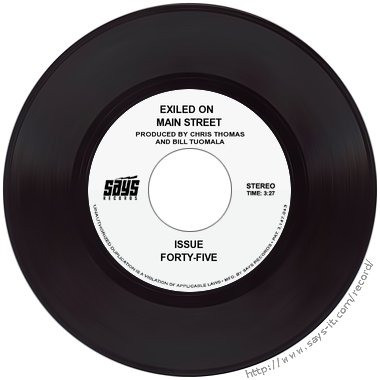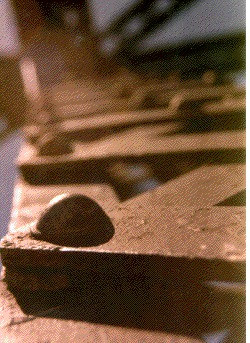Copy Link
Add to Bookmark
Report
HOMEBREW Digest #2854

HOMEBREW Digest #2854 Tue 20 October 1998
FORUM ON BEER, HOMEBREWING, AND RELATED ISSUES
Digest Janitor: janitor@hbd.org
Many thanks to the Observer & Eccentric Newspapers of
Livonia, Michigan for sponsoring the Homebrew Digest.
URL: http://www.oeonline.com
Contents:
All Munich ("David Root")
SRM wheel or films (jslusher)
Best Beer in Texas?? ("Mike Butterfield")
Low gravity partial mash (Mikey Beck)
70%EtOH (John Biggins)
water profile question (Andrew Stavrolakis)
Re: Ginger in beer, RIMS progress, brewery demise... (Joe Rolfe)
Brewing with Ginger (David C. Harsh)
Ideas for sparge arm (Michael Rose)
agitation and trub formation (Boeing)" <BayerMA@navair.navy.mil>
re:homebrew cooking - salmon baked in foil (Shane & Laura)
regulators, steam beer hops ("Bryan L. Gros")
reply to: Alcohol Spray, HBD#2852 (Herbert Bresler)
response to "peracetic acid" (Herbert Bresler)
Re: Adding Ginger to beer (John Munn)
Bad Gas? (Troy Hager)
Graduation to All-Grain (David Swedin)
Weak tea flavor (michael w bardallis)
Unsubscribition assistance for numbered Compuserve accounts ("Michael R. Beck")
Beer is our obsession and we're late for therapy!
Send your entries in for Hoppiest Event On Earth yet?
Details: http://members.tripod.com/~BrewMiester_2/Home.html
NOTE NEW HOMEBREW ADDRESS: hbd.org
Send articles for __publication_only__ to post@hbd.org
(Articles are published in the order they are received.)
If your e-mail account is being deleted, please unsubscribe first!!
To SUBSCRIBE or UNSUBSCRIBE send an e-mail message with the word
"subscribe" or "unsubscribe" to request@hbd.org.
**SUBSCRIBE AND UNSUBSCRIBE REQUESTS MUST BE SENT FROM THE E-MAIL
**ACCOUNT YOU WISH TO HAVE SUBSCRIBED OR UNSUBSCRIBED!!!
IF YOU HAVE SPAM-PROOFED your e-mail address, the autoresponder and
the SUBSCRIBE/UNSUBSCRIBE commands will fail!
For "Cat's Meow" information, send mail to brewery@hbd.org
Homebrew Digest Information on the Web: http://hbd.org
Requests for back issues will be ignored. Back issues are available via:
Anonymous ftp from...
ftp://hbd.org/pub/hbd/digests
ftp://ftp.stanford.edu/pub/clubs/homebrew/beer
AFS users can find it under...
/afs/ir.stanford.edu/ftp/pub/clubs/homebrew/beer
JANITORS on duty: Pat Babcock and Karl Lutzen (janitor@hbd.org)
----------------------------------------------------------------------
Date: Mon, 19 Oct 1998 07:27:54 -0400
From: "David Root" <droot@concentric.net>
Subject: All Munich
Our Club, the Niagara Assoc. of Homebrewers and I brewed
the All munich malt. 33 Pounds of grain, ~8 gals of water. 15 gals
of wort somewhere around 154 Df (it was an up and down ride)
Yes it converted, but only after four hours. OG 1.066. A great
time was had by all.
Thanks for the input.
David Root Lockport NY droot@concentric.net
------------------------------
Date: Mon, 19 Oct 1998 08:45:36 -0400
From: jslusher <jslusher@flash.net>
Subject: SRM wheel or films
Hello fellow Homebrewers,
Does anyone have (or know of) a source for a SRM color wheel?...I've heard
that this may exist, but I just cannot find a source. If the wheel is
fictitious item, then is there a kit with acetyl strips representing the
degrees L? Thanks in advance...Cheers!
************************************************
John Slusher
jslusher@flash.net
www.flash.net/~jslusher/crabs
************************************************
------------------------------
Date: Mon, 19 Oct 1998 13:55:31 +0200
From: "Mike Butterfield" <XPBRMB@sugar.org.za>
Subject: Best Beer in Texas??
Hi
I will be making my first visit to Texas (and only my 2nd to the USA) in
November, staying in Weslaco and College Station. I believe that these
are small places (Weslaco at least), and so I doubt that I will find any
brewpubs to try out?? At any rate, I would really like to hear about good
beers I could encounter, and what I should look out for. (I am ashamed to
confess that on my first visit to the US, I stuck to industrial light
lager (ILL?), as I hadn't got into brewing yet).
All comments appreciated.
Thanks very much
Mike Butterfield
Pietermaritzburg,
South Africa
------------------------------
Date: Mon, 19 Oct 1998 06:33:59 -0700 (PDT)
From: Mikey Beck <stilts121@yahoo.com>
Subject: Low gravity partial mash
I just brewed my first partial mash batch yesterday and the OG came
out a little lower than expected. The grain bill called for 3# of
malted barley and 3# of DME. When I measured the OG, it was 1.022.
That seems just more than a little low (the target OG was 1.038). The
reason probably has something to do with my sparging technique (the
actual mashing was actually much easier than I expected and I had no
problems maintaining temperatures). I sparged a 2.5 qt mash with 1
gallon of 170 degree water and recirculated about half a gallon of it.
It wasn't cloudy after recirculation so I just drained the rest of it
off. Should I have recirculated it again?
Since I'm making this beer for my dad and brother to drink (who won't
even look at anything darker than bud let alone drink it) I'm not very
concerned with the beer itself, but I had a good time mashing
yesterday (I actually cleaned the house out with the smell and was
left alone all day!!!) and I'm curious about my technique.
thanks in advance,
mikey.
BSSC/121
_________________________________________________________
DO YOU YAHOO!?
Get your free @yahoo.com address at http://mail.yahoo.com
------------------------------
Date: Mon, 19 Oct 1998 09:55:54 -0500
From: John Biggins <jbbiggin@mail.med.cornell.edu>
Subject: 70%EtOH
>I agree with Herb Bressler on the 70% alcohol/ water mix for a spray
>sanitizer. I keep this mixture in a spray bottle
>and use it to sanitize counter tops before setting sanitized parts on it as
>well as other items. I have been told that contact time
>for alcohol may be an issue? Also not to use 100% alcohol?
Diluting EtOH to 70% not only saves how much EtOH you use w/o losing
antibacterial effect, but the other 30% water dissolves the polar salts
that are not soluble in organic solvent.
- -------------
John B. Biggins Cornell University Medical College
1233 York Ave; Apt 19D Memorial Sloan-Kettering Cancer Center
New York, NY 10021 Graduate School of Medical Sciences
(212)717-0158 Student -- Program in Pharmacology
"Science, like Nature, must also be tamed
With a view towards its preservation.
Given the same state of integrity
It will surely serve us well."
-- Neil Peart; Natural Science (III) -- Permanent Waves
------------------------------
Date: Mon, 19 Oct 1998 10:01:08 -0400
From: Andrew Stavrolakis <andrew_stavrolakis@harvard.edu>
Subject: water profile question
Hi all,
I have a question about the appropriate treatment of my well water. I
haven't had an analysis done, but I've spoken with the director of the local
county water testing lab and he gave me a general profile from my area.
Generally, the water is very soft with little ion content. Less than 10 ppm
of Calcium, SO4, chloride, sodium, magnesium etc. It has very low pH,
however, typically 5.5 to 6.
It's basically rainwater collected in a sole source aquifer in a glacial
moraine. Today, this moraine is an island about 7 miles out to sea. It's a
shallow well in sandy loam.
Given the low pH of the water, should I add carbonate buffering? Is there a
danger that mash pH would dip too low, and if so, how would this manifest
itself flavor wise? How much chalk would dissolve in this water without
further acidification? I've read that normally chalk will only dissolve at
a rate of 1/4 gm/ 5 gal (Ken Schwartz, Quickie Water Chemistry Primer)
Should I use baking soda instead?
Should I not worry about the water at all unless to add sulphate for making
certain kinds of pale ales?
I get good extraction with this water, but I notice the flavors of beer I
make with it aren't quite what I'd like them to be, and water chemistry is
the variable I've completely ignored, until now.
Thanks in advance for your help.
- --Andrew
andrew_stavrolakis@harvard.edu
------------------------------
Date: Mon, 19 Oct 1998 10:23:36 -0400
From: Joe Rolfe <rolfe@sky.sky.com>
Subject: Re: Ginger in beer, RIMS progress, brewery demise...
We had a guy brewing a fairly nice honey / ginger beer for a while
before he went belly up. He used fresh ginger root, crushed in a
small pail and placed in a nylon sack, 5 minutes before and during
the 20-30 minute whirlpool. It was removed prior to transfer to
fermentation. A little bit goes a long way. I believe he used about
a pound (maybe a little less) per barrel, and it was very obvious
in the final product. I would not bother with the powdered crap.
Made some progress on the big RIMS, need to run the 1BBL test for a
longer
time frame. (For about 30 gal water and a 3500W element I was getting
1degF
per min rise - that would be nice.) Again anyone have any flow rates for
the
size they use?? Does anyone care what the flow rate is or is it just
get
the 2F/min rise and the hell with it. Boy do I remember whay I hate
engineering
a brewery......
And from the Sunday Boston Globe - yet another Mass brewery bites the
dust.
Middlesex Brewing - up for auction Wednesday 11am. This is a real nice
brewery too, 35psi steam fired, nice mash/lauter with rakes. From the
local
grape vine - several more small breweries in the area are on the slide
too.
I wont mention any names but one was down the street from me. No love
lost
there. Old Harbour/Pilgrim is rumored to be on the block shortly also,
they
closed several months ago. Looks like a great time to pick up a brewery
for
short cash. I think one of the Colorado brewpub proprietors mention....
" The pioneers get the arrows, the settlers get the land ". OH I forgot
screw the Mass distributors.....especially EAST COAST BEVERAGE....NO I'm
not
bitter at all...
Good luck and great brewing
Joe Rolfe
------------------------------
Date: Mon, 19 Oct 1998 10:43:36 -0400
From: David.Harsh@uc.edu (David C. Harsh)
Subject: Brewing with Ginger
About three years ago (or so) there was an article in Zymurgy by Ted Bergin
(he was a Bloatarian back then) about brewing with ginger and as I recall,
he grated the ginger and added it to the boil. You can probably get just
as much flavor by thin slicing and this would have the advantage of being
easier to separate than the grated. Too much ginger can actually get very
hot (as in spicy), so you may need to make sure you don't use too much.
Ted brought some of his beers to one of our club meetings and they were
very well received by all members, even by those that had expressed a
preference for Mary Ann.
Dave
Dave Harsh
Bloatarian Brewing League, Cincinnati, OH
O-
------------------------------
Date: Mon, 19 Oct 1998 07:47:40 -0700
From: Michael Rose <mrose@ucr.campuscw.net.nospam>
Subject: Ideas for sparge arm
I'm looking for ideas to improve my sparge arm design. I do fairly fast
vorloffs(recir pump) and sparging. I do both 5 and 10 gallon batchs in a
converted sankee keg. I would like the design to work perfectly, have no
cost or labor to build :^) TIA for any ideas you might have, Mike
Michael Rose Riverside, CA mrose@ucr.campuscw.net
------------------------------
Date: Mon, 19 Oct 1998 13:27:34 -0400
From: "Bayer, Mark A (Boeing)" <BayerMA@navair.navy.mil>
Subject: agitation and trub formation
collective homebrew conscience:
this weekend i used a procedure for wort chilling/oxygenation/trub
separation that produced a weird result. my procedure was different than my
normal method. i'm hoping for some explanation.
here's what i used to do: chill the wort in the kettle with an immersion
chiller, with lots of agitation of the wort after the temperature got down
to about 80 deg f. the agitation helped to chill the wort faster during the
last 10 minutes or so of chilling, which normally resulted in a temp between
60 and 65 deg f. then this wort was put through a funnel and strainer into
a 6.5 gallon glass carboy. this was not via a kettle tap/spigot - it was
poured, a pint at a time. lots of splashing in the carboy. after 8 to 12
hours, at 40 or 60 degrees f in the freezer (depending on if it was ale or
lager), the resultant wort would show significant (2 inches or more for a
standard og of 1.048) trub formation in the bottom, off which it would be
racked.
here's what i did this past weekend: i used the immersion chiller in my new
kettle, which has a false bottom and a spigot, and i didn't agitate at all.
i just left the chiller in for about an hour and the temp got down to 69
degrees f. i then drew it out through the spigot, *very* slowly, into the 6
gallon carboy. it took about 30 minutes to completely drain. i was trying
not to disturb the hop/hot break layer on top of the false bottom. the
carboy went into the freezer for 6 hours and the temp inside the freezer was
about 55 degrees f.
when it came time to rack off the trub, i noticed there was hardly any trub
at all. also, upon taking the specific gravity, i had achieved 3 points of
sg higher than planned (this equated to 91% brewhouse efficiency, as opposed
to my normal 85%). plus, the wort was more cloudy than usual - it was hard
to read the gravity on the hydrometer stem. so, i racked the wort out of
the carboy into the primary fermentor, which contained the primary yeast
sediment from the beer brewed one week earlier. "gee, where's all the cold
break?" i thought.
after racking was complete, i shook/rolled the carboy hard for about a
minute, to disperse the yeast cake, which had stayed fairly intact on the
bottom. now, remember this is 5 gallons of wort in a 7 gallon carboy, so
there's plenty of room for the wort to move around in. i then oxygenated
for about a minute.
2 hours later, there was nearly two inches of trub in the bottom of the
fermentor. it had not been put in the freezer - it was out in the room
(temp = 70 deg f).
i've brewed 72 batches of beer in my life, and this is the first time this
has happened. i've also always agitated the wort in some fashion before
putting it in the settling tank, until this weekend.
my questions are: 1) does agitation or aeration of cooled wort speed cold
break formation?; 2) was the apparent increase in extract due to the trub
that was still "dissolved" in my wort?; 3) is it possible that some of
this trub is actually hot break? i thought i drew the wort slowly enough to
avoid this, but i admit i don't have a real handle on what the relative
quantities of hot and cold break should be. i thought i remembered reading
somewhere that hot break should be the greatest proportion of the total
break material generated. can hot break re-dissolve into the wort during
immersion chilling?
until i understand this a little better, i think i'm going to move back to
agitating the immersion chiller for the last 10 minutes or so. this
eliminates my ability to keep it covered, but i think i'd rather have it
open to the air for 10 minutes if it's going to help sediment trub.
brew hard,
mark bayer
------------------------------
Date: Mon, 19 Oct 1998 11:31:45 -0700
From: Shane & Laura <scook@infoserve.net>
Subject: re:homebrew cooking - salmon baked in foil
In HBD 2851 Scott Murman posted a recipe for salmon baked in foil. It
just so happens that later that day a friend gave me a couple of nice
rainbow trout that he had caught that weekend, so with the post in mind
I gave it a try. Only one comment:
MMMMM Yummy!!
even without with trout not salmon.
Thanks for the recipe Scott.
Shane Cook
___________________________
E-mail: scook@infoserve.net
Phone: (604) 736-1187
ICQ #: 15754362
------------------------------
Date: Mon, 19 Oct 1998 11:34:41 -0700
From: "Bryan L. Gros" <gros@bigfoot.com>
Subject: regulators, steam beer hops
I've finally found a used 2.5# CO2 tank. 15# tanks are hardly
portable. Any suggestions for a small regulator?
I've seen something called, I think, a FROG regulator. It is
small, and fixed at 22psi. Has a 3/16" hose barb for output.
Cost about $30. The pressure is a tad higher than I'd like,
but it should be fine for simply dispensing at a party or
picnic. But it seems like it should be cheaper than it is. A
new, 2-guage regulator is about $55, but it is pretty bulky
and perhaps overkill for my needs. Any alternatives?
****
What is the consensus on hopping schedule for a steam
beer? 100% Northern Brewer? All bittering hops, or
are multiple additions suggested?
- Bryan
Bryan Gros gros@bigfoot.com
Oakland, CA
Visit the Draught Board homebrew website:
http://www.valhallabrewing.com/~thor/dboard/index.htm
------------------------------
Date: Mon, 19 Oct 1998 15:55:13 -0400
From: Herbert Bresler <bresler.7@osu.edu>
Subject: reply to: Alcohol Spray, HBD#2852
Jim Tiefenthal commented about Alcohol Spray in HBD#2852:
[snip] 70% alcohol/ water mix for a spray sanitizer...
...I have been told that contact time for alcohol may be an issue?
Also not to use 100% alcohol? Not sure, or at least don't remember why;
Help me out Herb.
Jim,
As odd as it sounds, 70% alcohol is a better sanitizer than any other
concentration, higher or lower. It has to do with the ability of alcohol
to denature proteins snd interfere with bacterial metabolism in the
presence of water, but not the absence of water. I have my copy of
"Inhibition and Destruction of the Microbial Cell" (ed. WB Hugo, 1971,
Academic Press, London) with me right now, so I could bore you with all the
gorey details, but I won't (lucky you).
The book says 60% to 70% alcohol in clean water is ideal; below 30% has
almost no bactericidal activity (although it has some bacteriostatic
activity at low concentrations). Ethanol is the most commonly used because
it provides the best combination of low toxicity (to humans), lack of
unpleasant aroma, good killing, good stability and ease of handling.
Isopropyl is second.
Contact time. On clean hard surfaces alcohol kills 95% to 99% of organisms
in 5 minutes.
Good luck and good sanitizing,
Herb
------------------------------
Date: Mon, 19 Oct 1998 16:29:33 -0400
From: Herbert Bresler <bresler.7@osu.edu>
Subject: response to "peracetic acid"
Steve Potter wrote about Al K's suggestion to use peracetic acid as a spray
on sanitizer.
Yes, indeed, as Steve writes, "peracetic acid will kill gram-positive and
gram-negative bacteria, fungi, and yeasts in 5 minutes or less at less than
100 ppm. In the presence of organic material, 200 to 500 ppm is required."
In those respects it's very much like chlorine bleach.
However, peracetic acid fails as a choice for spray disinfectant,
particularly for the home brewery, in several important ways:
1) It is a pungent-smelling lacrimator. (That means it'll bring tears to
your eyes.)
2) Because of it's slow decomposition into acetic acid and oxygen, it (the
40% concentrate) has to be stored in a vented container, otherwise it may
cause the container to burst (and you thought overpriming makes a mess).
(On the other hand, it will leave no residue behind ;-)
3) The (concentrate) liquid will blister the skin if not immediately
washed off.
So, I still think alcohol is the best choice. It's cheap, easy to use and
handle, it's stable, it's safe, and it works well.
Good luck and good (safe) brewing,
Herb
------------------------------
Date: Mon, 19 Oct 1998 18:10:34 -0400
From: John Munn <johnmunn@capital.net>
Subject: Re: Adding Ginger to beer
I add ginger directly to the bottle, and an advantage is that I don't
need to have an entire batch flavored with ginger by using this
technique. What I do is peel the root then wash it and cut it into dime
sized slices. Add a little water, cover with plastic wrap and heat in
the microwave. The intention here is to sterilize and kill the
nasties. I don't boil the ginger in the microwave for more than a few
seconds. I rely on the steam generated to take care of the sanitizing.
Carefully place a dime sized slice in a 12 or 16 oz bottle. More to
taste... experiment. Bottle as usual.
John Munn
------------------------------
Date: Tue, 20 Oct 1998 02:43:52 -0700
From: Troy Hager <thager@bsd.k12.ca.us>
Subject: Bad Gas?
Fellow HBDers,
This week I kegged and carbonated my lastest IPA and out of the secondary
it tasted absolutely wonderful. I put it in the keg and force carbonated it
and in my first samplings I taste some off flavors that I am thinking might
be attributed to the CO2. Kind of tastes like that smell you get when you
pop open an empty keg and you get a whiff of the old gas.
I am wondering if anyone else has had similar problems. Might I have gotten
a bad tank of CO2? Does CO2 from a tank flavor the beer? Should one use a
filter of some sort on the gas line?
I know many will say to naturally carbonate by priming with corn sugar, but
I would rather not because of these reasons:
- I secondary in my fridge and would need to warm the beer up to get those
yeasties going again
- It takes so long to carbonate it this way (another couple weeks??)
- My kegs don't hold well at low pressures, so I could wait for two weeks
and all the pressure could slowly have leaked out.
Also, most breweries force carbonate their beer (or so I am led to
believe), so why can't we do it and get good results as well?
Private email is fine. Thanks!
-Troy
------------------------------
Date: Mon, 19 Oct 1998 22:22:24 -0400
From: David Swedin <dkswedin@ctol.net>
Subject: Graduation to All-Grain
I want to make the jump from extract to all-grain brewing but feel I suffer
from heat-inadequacy. I'm wondering if someone may have ideas. Here is my
current situation: Electric stove which threatens shutdown with even lowly
extract boils less than 4 gal and no gas grill outside (charcoal lets me
enjoy a beer while I wait). The one thing I do have which may be in my
favor is natural gas coming in from the city for heat and hot water. One
option I guess is bag the electric stove and pipe a gas one in ($!$!$).
Another is perhaps plumbing a single burner off of the source to the
furnace in the basement. Is that even possible? If so, is it something I
could do myself or have someone come in? Would I need an exhaust hood?
Cost? So many questions. Any suggestions on this idea or any I haven't
thought of would be greatly appreciated.
thanks, dave
------------------------------
Date: Mon, 19 Oct 1998 23:26:32 -0400
From: dbgrowler@juno.com (michael w bardallis)
Subject: Weak tea flavor
Tannic flavors are usually caused by process/ingredients, especially
too-high mash/sparge pH. What kind of hops as dry hops? Many think
Northern Brewer contributes this character. My wife usually pegs N.B.,
saying it tastes like iced tea... Tannic harshness usually fades with
time, so sitting on it awhile is my recommendation.
Mike Bardallis
Recovering from RAF in
Allen Park, MI
___________________________________________________________________
You don't need to buy Internet access to use free Internet e-mail.
Get completely free e-mail from Juno at http://www.juno.com
or call Juno at (800) 654-JUNO [654-5866]
------------------------------
Date: Tue, 20 Oct 1998 05:52:31 +0100
From: "Michael R. Beck" <xrjamt@csi.com>
Subject: Unsubscribition assistance for numbered Compuserve accounts
The paragraph below applies to me. Please take me off you subscription
list. My numerical account number with Compuserve is
101465.1255@compuserve.com. Thank you
Mike Beck
If you are a CompuServe user, you may have subscribed back when
they had numbered accounts for e-mail addresses
(12345.1234@COMPUSERVE.COM). If this is the case, please send us
the account number, and we should be able to process your
request!
------------------------------
End of HOMEBREW Digest #2854, 10/20/98
*************************************
-------



















